Apollo 11 LM G & N Dictionary, pp PGNS-31/PGNS-32, a single sheet printed recto and verso. NASA/MSC, May 29, 1969, revised July 5, 1969. 8 by 5½ inches. With a Typed Letter Signed by Buzz Aldrin. The sheet lists the exact steps Neil Armstrong and Buzz Aldrin performed to place Lunar Module Eagle into the proper flight configuration to ignite the large descent engine. Two of these engines burns were performed during the complicated trajectory sequence designed to accomplish the goal of the Apollo Program: landing men on the moon. Accompanied by BUZZ ALDRIN'S two-page letter, which reads in part: "Enclosed with this letter is a sheet numbered PGNS-31 and PGNS-32 from the Apollo 11 LM G and N Dictionary ... This sheet is from the Primary Guidance and Navigation (PGNS) Section and has critical flight procedure steps. It is one of the most significant pages from the entire dictionary. Side PGNS-31 lists the P40 DPS THRUST or Descent Propulsion Section Program which were the steps that Neil Armstrong and I used to ignite our large descent engine on Lunar Module Eagle. The first 12 steps are switch or configurations settings to be done each time prior to entering the V37E (enter) 40E (enter) commands to start the P40 program. The next steps were to verify the FDAI or Flight Director Attitude Indicators checked out properly both in automatic and manual modes. Side PGNS-32 has the countdown sequence for a DPS burn starting at minus 35 seconds down to minus 5 seconds and the ignition proceed command. The next steps allowed monitoring the start of the burn plus provided failure procedures. We first used the descent engine for the DOI or Descent Orbit Insertion burn which lower Eagle's orbit to about 50,000 feet above the Moon. This occurred on the back side of the Moon while out of radio contact with Mission Control. Once we came into contact and reported our successful burn, we waited for a go ahead to perform the actual landing during the same orbit. After Mission Control verified our flight status, they gave us a 'GO' for PDI or Powered Descent Initiation which was our long descent engine burn to lower us to the lunar surface. Our lunar landing was an experience I will never forget. All was going well until Neil and I saw our instrument panel flash a '1202' program alarm. We both queried Mission Control about this alarm because we had never seen it before in any simulation. After a few very tense moments, Houston radioed us that we were 'GO on that alarm.' That was good news, yet a few seconds later the same alarm occurred again. We were getting behind on our checklist tasks with these alarm distractions and I was concerned that we might have to abort the landing. About 3 minutes later, an additional alarm '1201' flashed. Mission Control told us that it was of the same type as the '1202' and that we were still 'GO' for landing. The alarms were telling us that the computer had too many tasks to perform and was overloaded. Our focus shifted back to our flying, trusting Mission Control's 'GO' decision. Around 8 minutes into our descent engine burn, we started the approach phase of the landing sequence. Neil was monitoring our instruments and the visual view out his window plus cross-checking our descent rate with the descent grid from our LM Timeline Book. We had just pitched over which allowed our first good view of the general landing area. I was focused on the computer descent readouts as Neil monitored the area the computer was targeting for landing. Neil became increasingly concerned as the computer was sending us toward a large crater surrounded by boulders. At around 500 feet above the moon, Neil entered the commands to manually fly Eagle to the lunar surface with computer support. He slowed the descent rate to just a few feet per second and studied the surrounding terrain. Neil asked me about our fuel status and I indicated we had 8 percent remaining. I then had a chance to glance outside and began to understand the situation, cr
Apollo 11 LM G & N Dictionary, pp PGNS-31/PGNS-32, a single sheet printed recto and verso. NASA/MSC, May 29, 1969, revised July 5, 1969. 8 by 5½ inches. With a Typed Letter Signed by Buzz Aldrin. The sheet lists the exact steps Neil Armstrong and Buzz Aldrin performed to place Lunar Module Eagle into the proper flight configuration to ignite the large descent engine. Two of these engines burns were performed during the complicated trajectory sequence designed to accomplish the goal of the Apollo Program: landing men on the moon. Accompanied by BUZZ ALDRIN'S two-page letter, which reads in part: "Enclosed with this letter is a sheet numbered PGNS-31 and PGNS-32 from the Apollo 11 LM G and N Dictionary ... This sheet is from the Primary Guidance and Navigation (PGNS) Section and has critical flight procedure steps. It is one of the most significant pages from the entire dictionary. Side PGNS-31 lists the P40 DPS THRUST or Descent Propulsion Section Program which were the steps that Neil Armstrong and I used to ignite our large descent engine on Lunar Module Eagle. The first 12 steps are switch or configurations settings to be done each time prior to entering the V37E (enter) 40E (enter) commands to start the P40 program. The next steps were to verify the FDAI or Flight Director Attitude Indicators checked out properly both in automatic and manual modes. Side PGNS-32 has the countdown sequence for a DPS burn starting at minus 35 seconds down to minus 5 seconds and the ignition proceed command. The next steps allowed monitoring the start of the burn plus provided failure procedures. We first used the descent engine for the DOI or Descent Orbit Insertion burn which lower Eagle's orbit to about 50,000 feet above the Moon. This occurred on the back side of the Moon while out of radio contact with Mission Control. Once we came into contact and reported our successful burn, we waited for a go ahead to perform the actual landing during the same orbit. After Mission Control verified our flight status, they gave us a 'GO' for PDI or Powered Descent Initiation which was our long descent engine burn to lower us to the lunar surface. Our lunar landing was an experience I will never forget. All was going well until Neil and I saw our instrument panel flash a '1202' program alarm. We both queried Mission Control about this alarm because we had never seen it before in any simulation. After a few very tense moments, Houston radioed us that we were 'GO on that alarm.' That was good news, yet a few seconds later the same alarm occurred again. We were getting behind on our checklist tasks with these alarm distractions and I was concerned that we might have to abort the landing. About 3 minutes later, an additional alarm '1201' flashed. Mission Control told us that it was of the same type as the '1202' and that we were still 'GO' for landing. The alarms were telling us that the computer had too many tasks to perform and was overloaded. Our focus shifted back to our flying, trusting Mission Control's 'GO' decision. Around 8 minutes into our descent engine burn, we started the approach phase of the landing sequence. Neil was monitoring our instruments and the visual view out his window plus cross-checking our descent rate with the descent grid from our LM Timeline Book. We had just pitched over which allowed our first good view of the general landing area. I was focused on the computer descent readouts as Neil monitored the area the computer was targeting for landing. Neil became increasingly concerned as the computer was sending us toward a large crater surrounded by boulders. At around 500 feet above the moon, Neil entered the commands to manually fly Eagle to the lunar surface with computer support. He slowed the descent rate to just a few feet per second and studied the surrounding terrain. Neil asked me about our fuel status and I indicated we had 8 percent remaining. I then had a chance to glance outside and began to understand the situation, cr

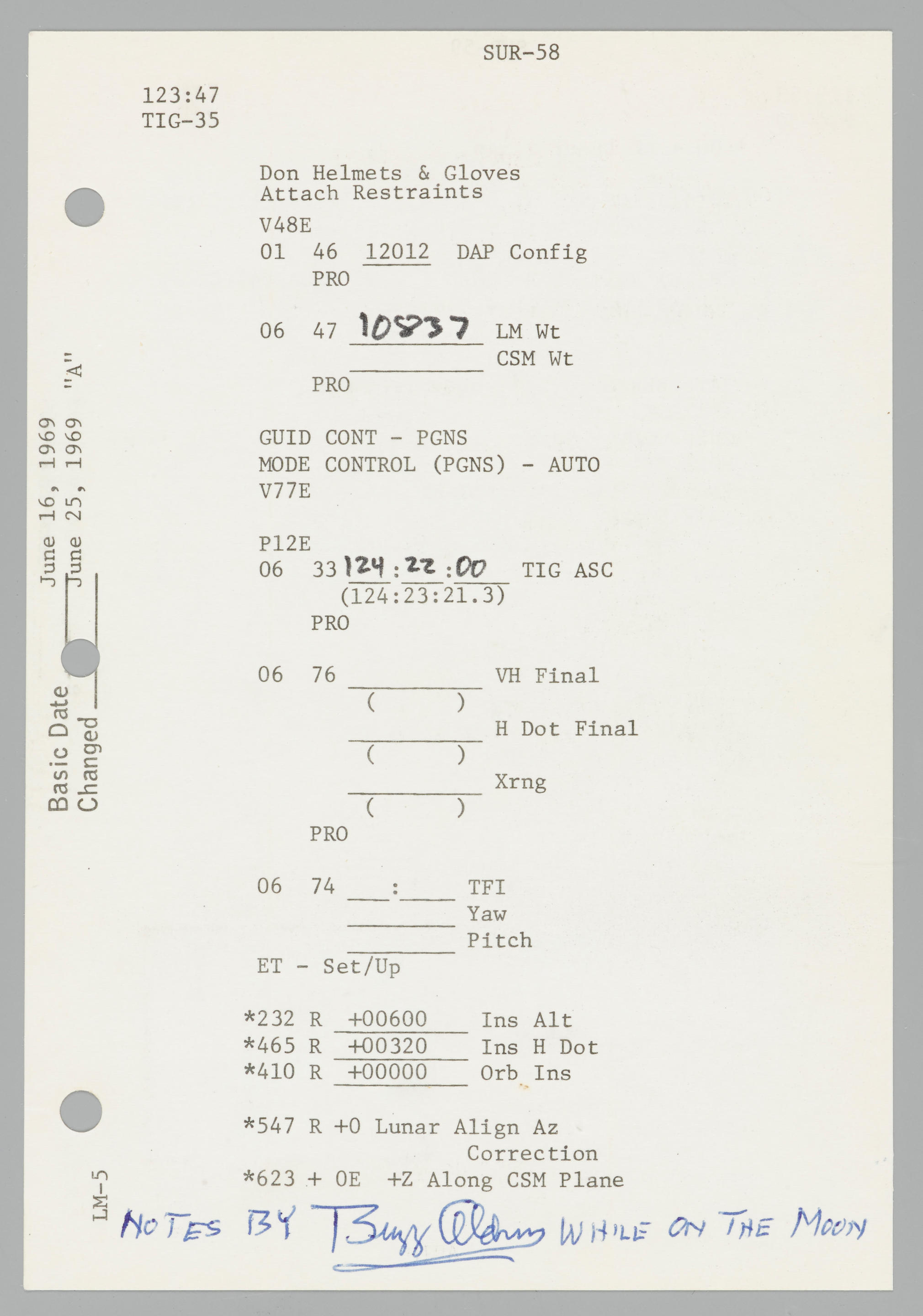

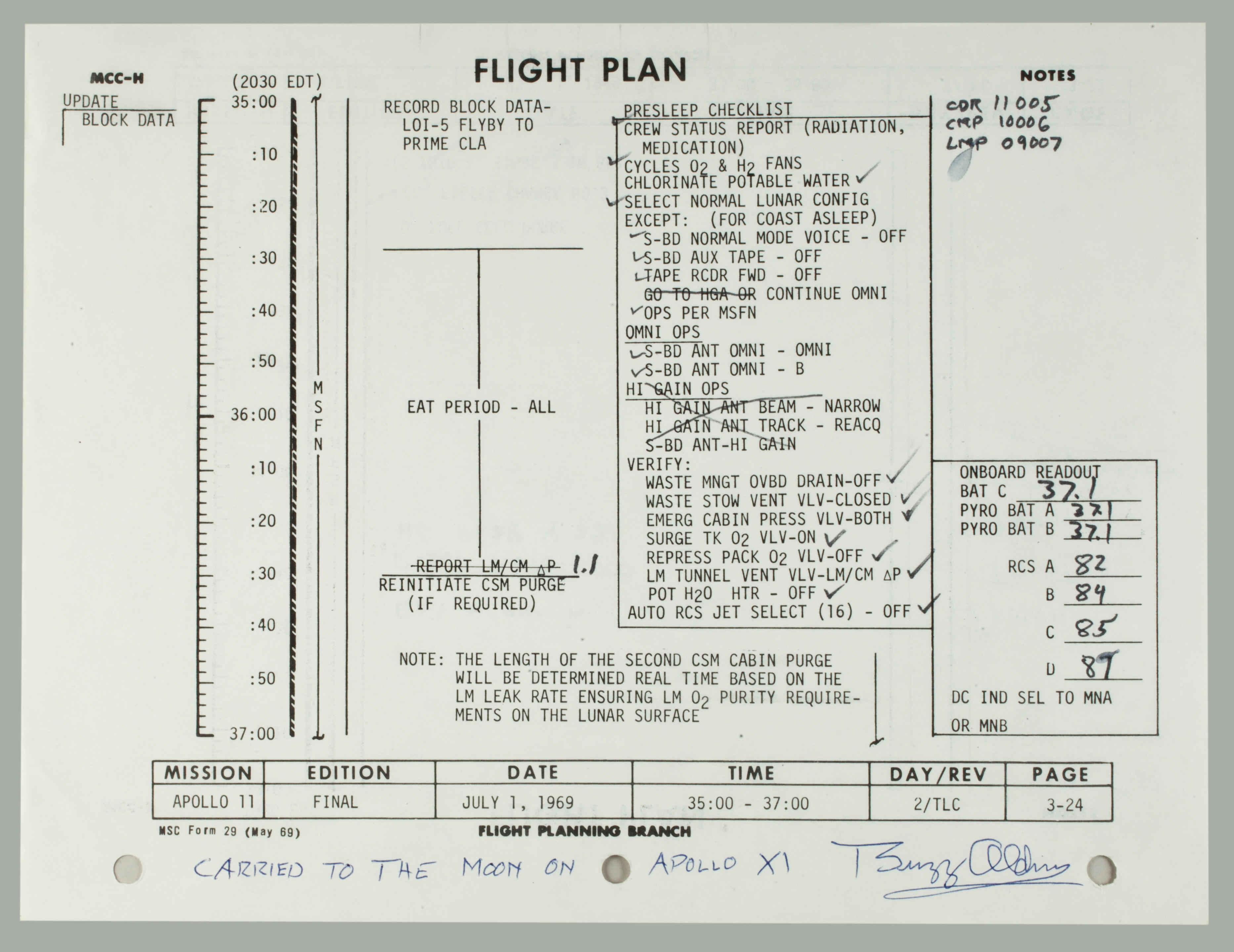
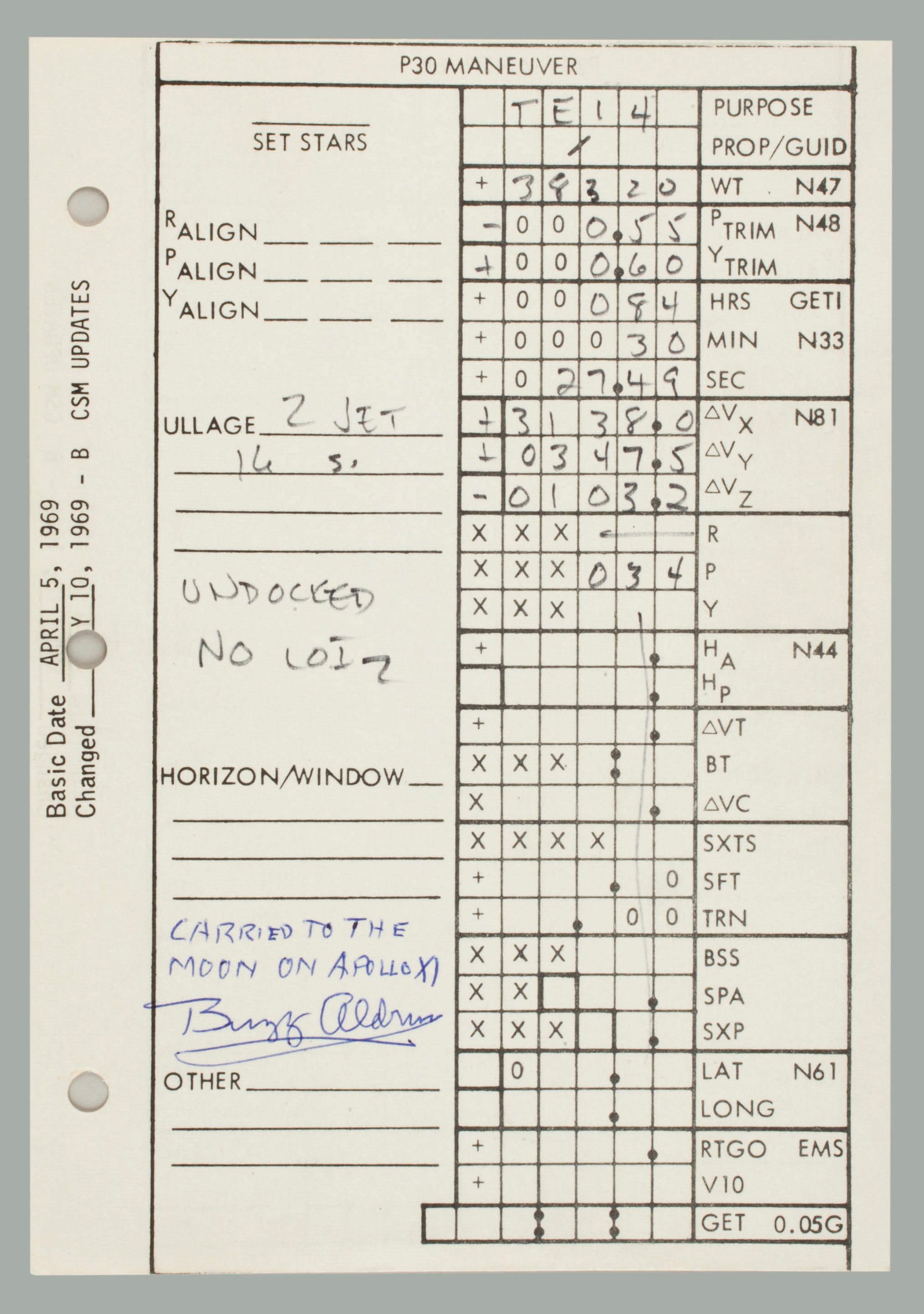

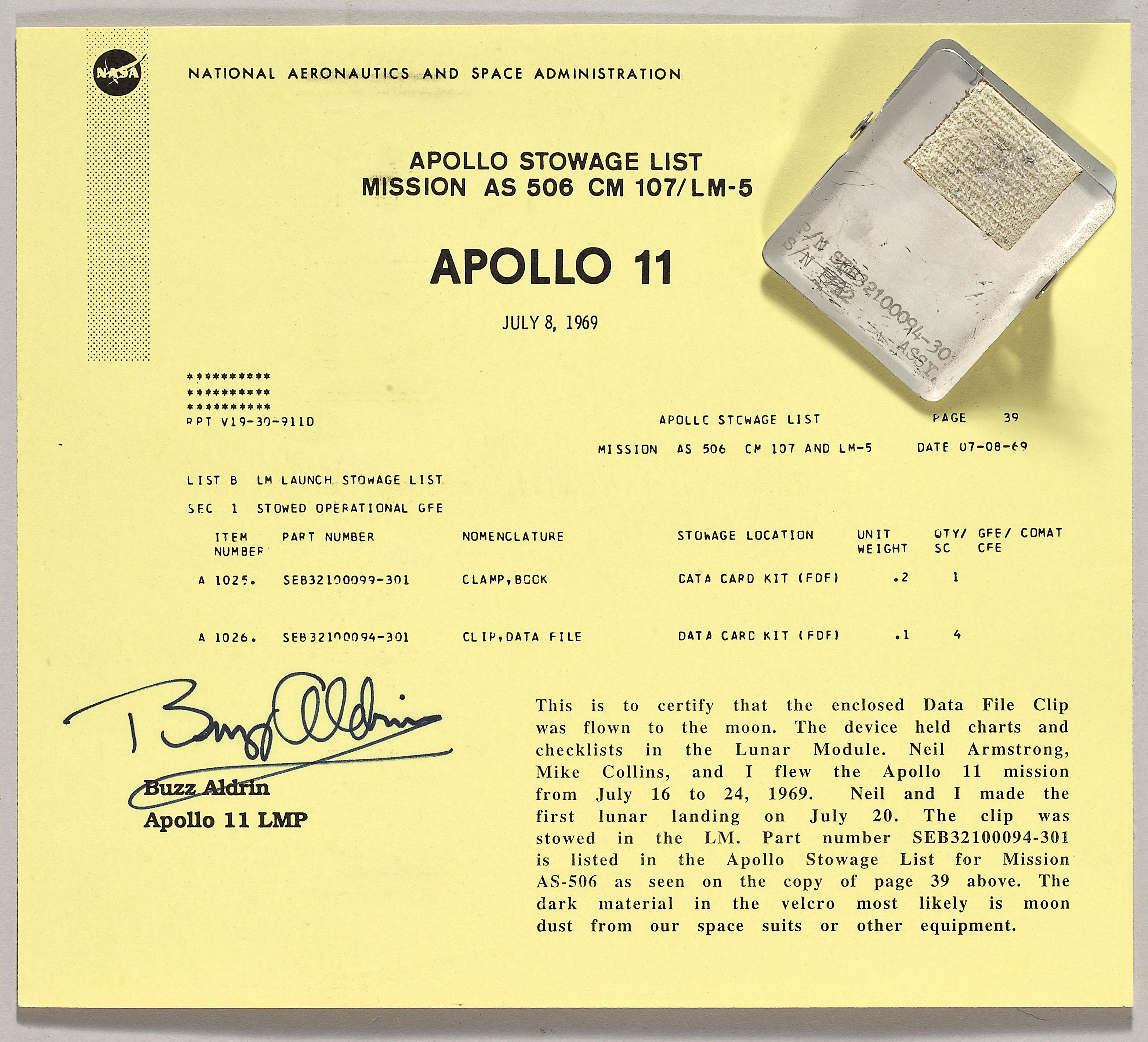



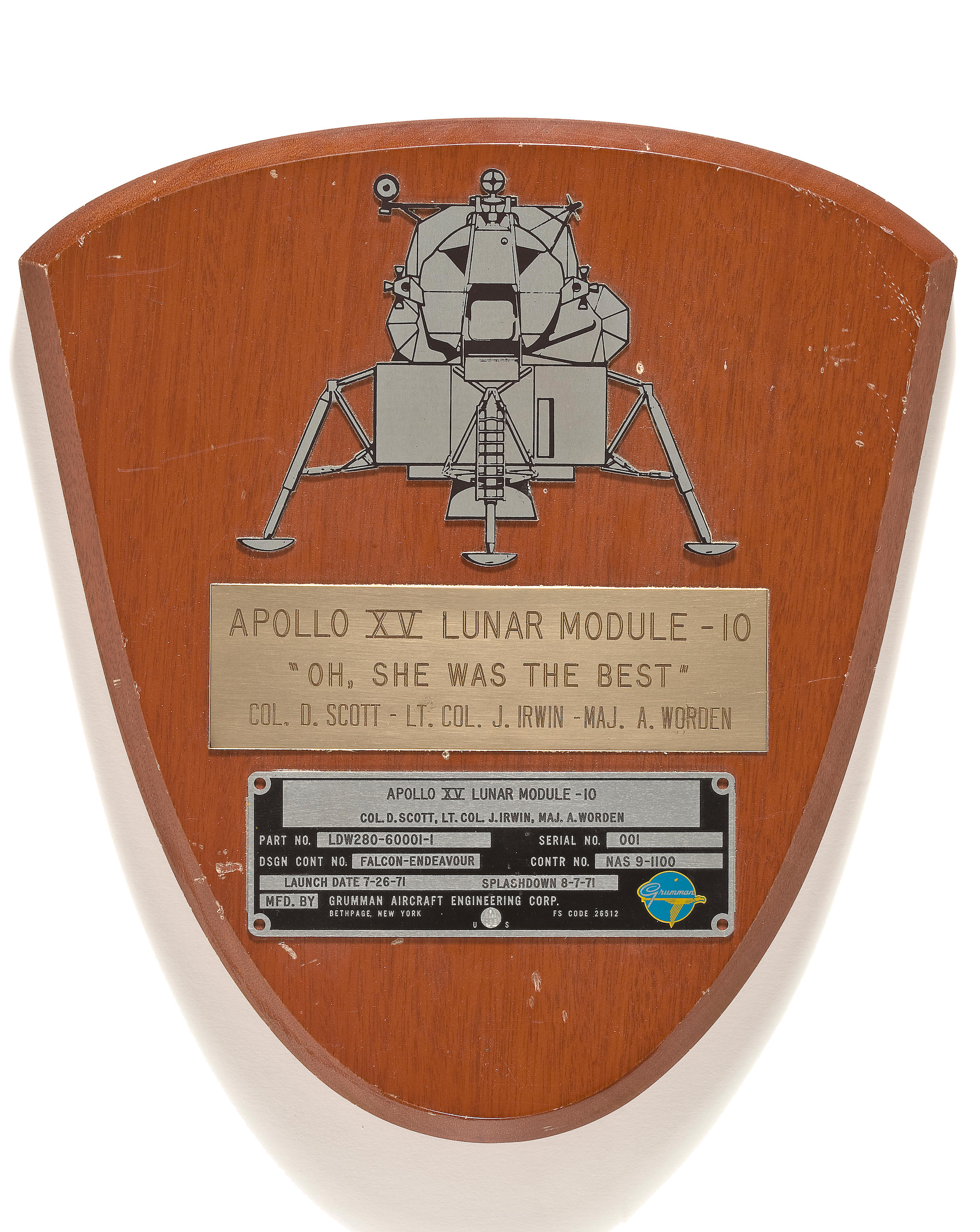




Testen Sie LotSearch und seine Premium-Features 7 Tage - ohne Kosten!
Lassen Sie sich automatisch über neue Objekte in kommenden Auktionen benachrichtigen.
Suchauftrag anlegen